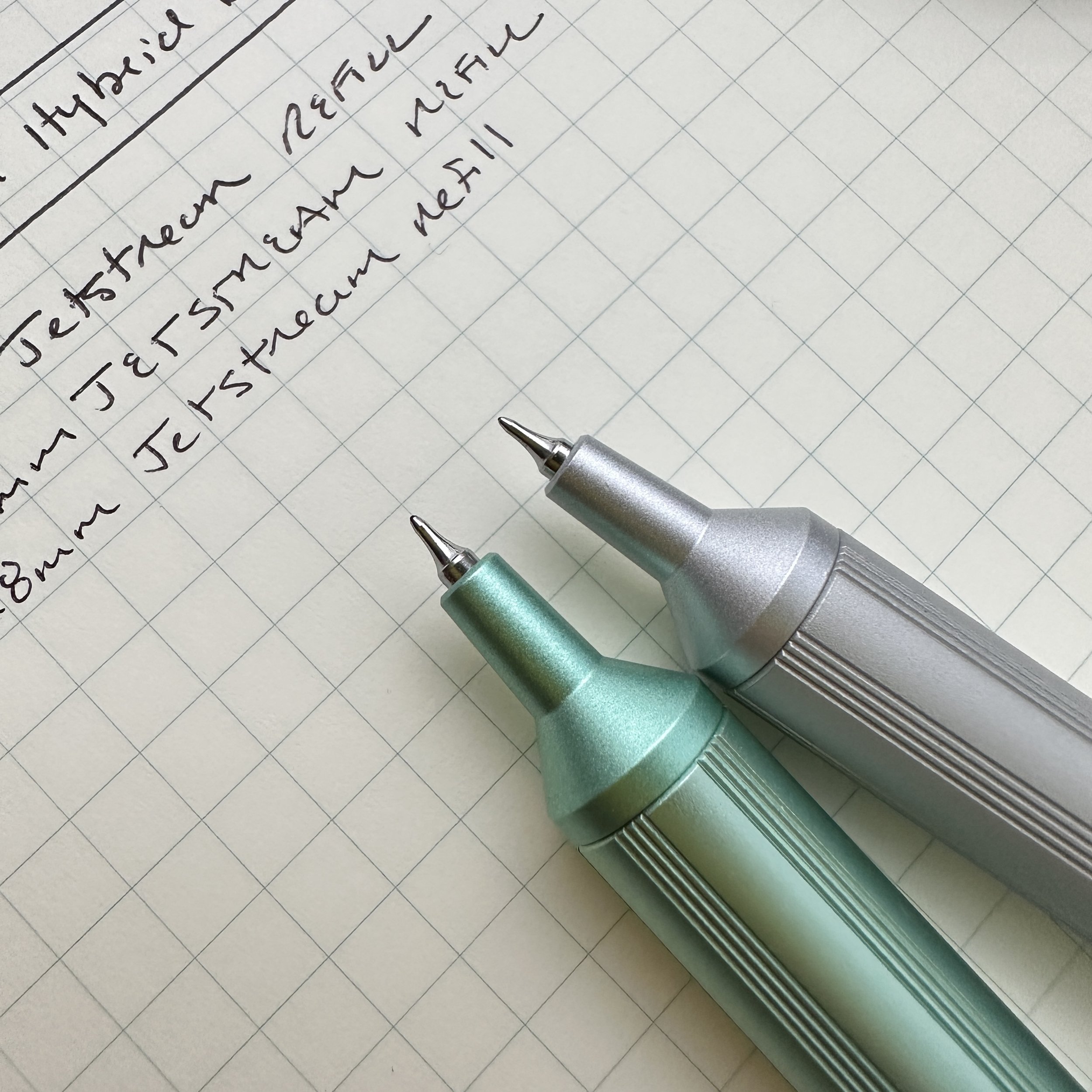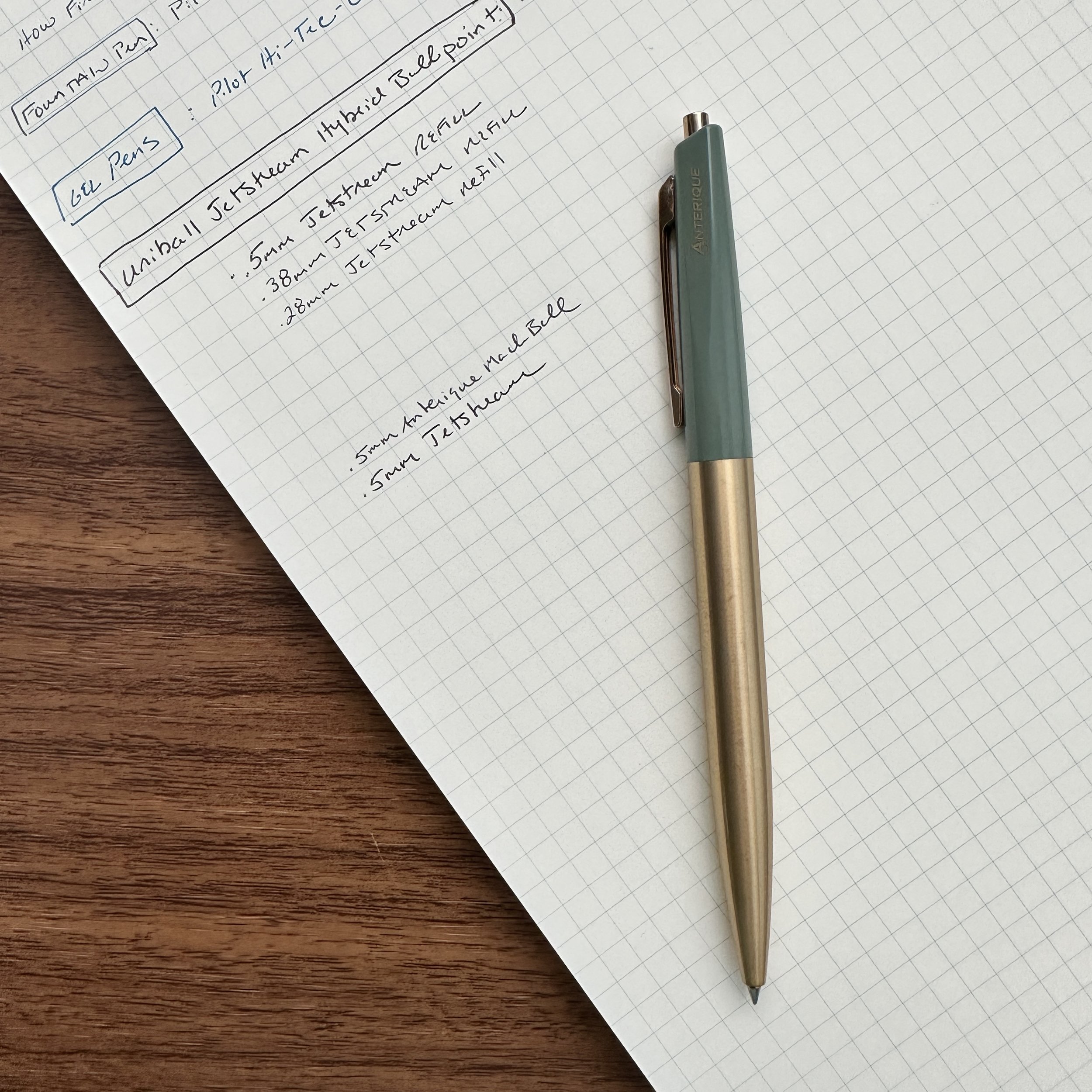If I’ve seemed a bit absent from the pen internets lately, it’s not without good reason: I’ve spent much of the past two weeks either traveling to pen shows or finalizing taxes, like everyone else here in the States. While I do have an accountant to help me finalize any submissions, I’m in that weird spot where my business isn’t large enough to justify the expense of a regular bookkeeper, so I still do much of the work myself, and a lot of it requires manual review of invoices, reports, and related documentation.
But enough about the nuts and bolts of tax prep. Nobody really wants to read about that, and those of you who aren’t serial procrastinators probably finished your taxes weeks ago. Every year, however, I always plan to write a post about what pens (and pencils) I use to make it through the first weeks of April, and never get around to it because the entire experience burns me out and I don’t want to even think about taxes more than I have to. But this year is different! 2024 tax season overlapped with an interesting vintage acquisition that I made at the Arkansas Pen Show, inspiring this morning’s post.
Three pens/pencils for tax season: The Penco Prime Timber 2.0 leadholder, a Caran d’Ache Fixpencil, and a vintage Parker 51 “Flighter”.
Vintage Extra-Fine Nibs and Dagger-Sharp Leadholders
If there’s one frustration among those of us who naturally have very small handwriting or or work in professions where we regularly annotate documents or take smaller notes, it’s the absence of (1) truly “extra fine” fountain pen nibs that write consistently small out of the box and (2) reliably good pencils - and sharpeners - that can hold a point for any substantial length of time. Sure, all of these things do exist, but mostly in import products and on the higher-end of the price spectrum. The standard steel “fine” or “extra-fine” fountain pen nib from Bock and JoWo - ubiquitous in modern pens - isn’t small enough for the type of notetaking I do regularly, so I have to rely on custom-ground needlepoints and Japanese gold nibs like the fine and extra-fine nibs from Pilot and Sailor.
This particular Parker 51 almost gets me as fine a line as I can get out of my Pilot Vanishing Point extra-fine nib.
This wasn’t always the case. Back when most bookkeeping and accounting work was done manually, it sustained a market for truly “extra-fine” nibs (preferably ones that were stiff to allow you to write very, very small with consistent inkflow, and which you sometimes see designated as “accounting nibs”). Case-in-point: the extra-fine nib on this Parker 51 “flighter” fountain pen I picked up at the pen show last week. I own a lot of Parker 51 fountain pens, and most of the nibs are standard fines or what I would consider a fine-medium: nothing like the smooth extra-fine nib on this one, which so far has held up wonderfully with reliable inkflow. I wouldn’t go so far as to call this pen a “needlepoint,” but it writes a line comparable to the extra-fine nib in Pilot Custom 74 or Vanishing Point, which I consider the most reliable, readily available, and reasonably priced writing experience for those looking to write very small with a fountain pen.
Otherwise, for very small writing I’m using a mechanical pencil, a .5mm low-viscosity ballpoint, or if I’m looking to keep things interesting, a leadholder pencil. One thing that I love about leadholders like the Caran d’Ache Fixpencil or the Penco Prime Timber is the ability to put an extremely sharp point on them, making them a favorite for art, drafting, or - like me - writing absolutely minute script. The 2mm and 3mm leads that these pencils use often sharpen better than the standard cores used in woodcase pencils, and you can easily change the hardness of the graphite to adjust point retention. In my experience, leadholder graphite tends to run slightly harder than its designation, so even a B or 2B drafting lead can get you both a very sharp point and a dark line.
To get the best point on a leadholder, I’d recommend you invest in a stand-alone lead pointer with replaceable blades, as the integrated sharpener in the cap of many leadholders isn’t of the highest quality. Sure, it’s serviceable in a pinch, but you won’t get the needle-tip that you see pictured here.
Properly sharpened graphite will almost always get you a finer line than a pen.
Takeaways and Where to Buy
I’ve been using my Penco leadholder and new 51 nearly exclusively for the past week, and recommend both as excellent tools for everyday work. Unfortunately, finding a suitable vintage nib for your needs likely requires a trip to a pen show or some back-and-forth with a reputable vintage pen dealer. Parker 51 nibs typically aren’t marked, and I’ve noticed a lot of variability in size between different pens that supposedly have the same nib, so I almost always like to write with them before I purchase. I acquired this particular Parker 51 from Danny Fudge at The Write Pen, who has become my go-to resource for all things vintage. The Penco “Prime Timber” leadholder is sold in our own shop - it’s an inexpensive quality leadholder that includes an excellent lead pointer in the packaging. We also have a selection of Caran d’Ache Fixpencils and graphite refills, as well as the ultra-sharp M+R Brass Lead pointer, which has holes for sharpening two different lead widths and replaceable blades.
Do you have a favorite tax-time tool? (Not Turbotax or Quickbooks, sorry, analog only! :)) Bonus points if you still use a leatherbound ledger!
The Gentleman Stationer is supported entirely by purchases from the T.G.S. Curated Shop and pledges via the T.G.S. Patreon Program. If you enjoyed this content, please consider supporting us directly!


